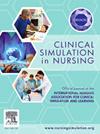Conversational AI in tactical combat casualty care: Baseline GPT-4o improves medic decision-making
IF 2.5
3区 医学
Q1 NURSING
引用次数: 0
Abstract
Background
Mechanical ventilation is vital in Tactical Combat Casualty Care (TCCC), yet many combat medics lack sufficient training in ventilator management. Although artificial intelligence (AI) shows promise in emergency medicine, its use in combat scenarios remains largely unexplored. This study evaluated AI-assisted ventilator management under simulated battlefield conditions.
Methods
This prospective, simulation-based observational study using a within-subject design was conducted in February 2025 in the Czech Republic with 42 Czech Armed Forces combat medics from four units. Participants adjusted ventilator settings (Vt, RR, FiO₂, PEEP, I:E) across ten scenarios, five with GPT-4o AI assistance and five without. The AI was customized to TCCC protocols and Joint Trauma System guidelines. Performance was scored objectively and analyzed using two-way repeated-measures ANOVA.
Results
AI assistance significantly improved parameter accuracy (p < 0.001), with an overall performance increase of 79.7%. The greatest gains were observed in Vt selection (164.2%), followed by FiO₂ (105.9%) and PEEP (60.6%), while I:E ratio adjustments showed marginal improvement (19%). Less experienced and female medics benefited most. Notably, AI-generated recommendations outperformed AI-assisted human decisions.
Conclusions
AI-enhanced support significantly improved ventilator management in combat simulations, suggesting potential to optimize real-time decision-making in austere environments. However, this system is not ready for operational deployment, and results should be interpreted as exploratory pending further field validation. Human oversight and medic accountability remain essential.
战术战斗伤亡护理中的会话AI:基线gpt - 40改善医疗决策
机械通气在战术战斗伤亡护理(TCCC)中至关重要,但许多战斗医务人员缺乏足够的呼吸机管理培训。尽管人工智能(AI)在急诊医学中显示出前景,但其在战斗场景中的应用在很大程度上仍未得到探索。该研究在模拟战场条件下评估了人工智能辅助呼吸机管理。研究人员于2025年2月在捷克共和国对来自四个单位的42名捷克武装部队战斗医务人员进行了前瞻性、基于模拟的观察性研究。参与者在10种情况下调整呼吸机设置(Vt、RR、FiO₂、PEEP、I:E),其中5种有gpt - 40 AI辅助,5种没有。人工智能是根据TCCC协议和关节创伤系统指南定制的。表现客观评分,并使用双向重复测量方差分析。结果辅助系统显著提高了参数准确性(p < 0.001),总体性能提高79.7%。Vt选择的增益最大(164.2%),其次是FiO₂(105.9%)和PEEP(60.6%),而I:E比率调整显示出边际改善(19%)。经验不足的女医务人员受益最多。值得注意的是,人工智能生成的建议优于人工智能辅助的人类决策。结论ai增强的支持显著改善了战斗模拟中的呼吸机管理,表明在严峻环境下优化实时决策的潜力。然而,该系统还没有准备好投入使用,结果应该被解释为探索性的,等待进一步的现场验证。人类监督和医疗问责仍然至关重要。
本文章由计算机程序翻译,如有差异,请以英文原文为准。
求助全文
约1分钟内获得全文
求助全文
来源期刊

Clinical Simulation in Nursing
NURSING-
CiteScore
5.50
自引率
15.40%
发文量
107
期刊介绍:
Clinical Simulation in Nursing is an international, peer reviewed journal published online monthly. Clinical Simulation in Nursing is the official journal of the International Nursing Association for Clinical Simulation & Learning (INACSL) and reflects its mission to advance the science of healthcare simulation.
We will review and accept articles from other health provider disciplines, if they are determined to be of interest to our readership. The journal accepts manuscripts meeting one or more of the following criteria:
Research articles and literature reviews (e.g. systematic, scoping, umbrella, integrative, etc.) about simulation
Innovative teaching/learning strategies using simulation
Articles updating guidelines, regulations, and legislative policies that impact simulation
Leadership for simulation
Simulation operations
Clinical and academic uses of simulation.
 求助内容:
求助内容: 应助结果提醒方式:
应助结果提醒方式:


